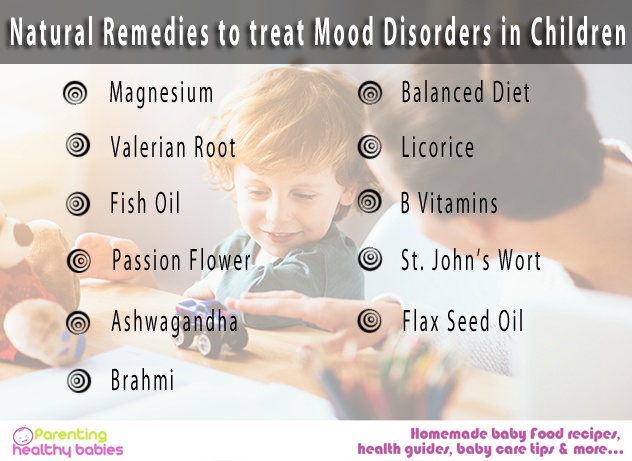Attention Deficit Hyperactivity Disorder is a neurobehavioral disorder. As the name suggests, people with Attention Deficit Hyperactivity Disorder (ADHD) can have difficulty in paying attention and/ or with significant levels of hyperactivity or impulsiveness. ADHD can be detected by the time the child is about 7 years of age.
It is actually very difficult to determine the exact demographics or the number of people being affected by ADHD. But, according to the CDC, about 9.5 percent of the children in the US have ADHD.
ADHD can be divided into three subtypes. These subtypes are characterized by the one or more traits. First is ADHD-PI or Attention Deficit Hyperactivity Disorder Predominantly Inattentive. In this type, the child can be very inattentive. The second type is ADHD-HI or Attention Deficit Hyperactivity Disorder Hyperactive-Impulsive. This type, the child is very hyperactive or impulsive. The third type is ADHD-C or Attention Deficit Hyperactivity Disorder Combined. In this case, the person can have both attention deficiency and is hyperactive.

Image courtesy: New Hampshire Public Radio
ADHD is characterized by brain dysfunction where the individual may not be able to control his or her behavior and sustain attention span for continued periods of time. This can lead to issues in education, behavior, social and related difficulties. ADHD is not a standalone disorder and can often be found accompanying other conditions such as dyslexia, dyspraxia and oppositional defiant disorder.
Symptoms of Attention Deficit Hyperactivity Disorder
Some of the symptoms for poor attention in ADHD include
- Fails in spanning close attention to details and makes careless mistakes in school work, homework, chores and home activities.
- The child finds it very difficult to span attention for sustained periods of time, often on a single activity or task or event.
- The child finds it difficult to listen or take instructions, even when spoken directly.
- The child cannot keep up with all the instructions that have been given and fails to finish homework, chores and other work that has been allotted to him or her. This is often misunderstood as oppositional behavior or failure to understand instructions, which is not the case most of the times.
- The child can also have difficulty in organizing tasks and activities. Often falls behind in time management.
- The child can avoid tasks that require too much of thinking or mental work.
- He or she can be easily distracted by environmental or external stimuli.
- He or she can forget some or many of the daily activities, more often.
Some of the symptoms for hyperactivity in ADHD include
- Fidgeting of hands, feet and squirms in feet are often observed in ADHD children.
- The child can leave the seat in a classroom, where everyone is expected to be seated.
- Talks very often and can talk quickly.
- The child cannot engage in leisure activities like playing, quietly.
Some of the symptoms for impulsivity in ADHD include
- The child can give out answers even before the question is completed.
- The child can have difficulty in waiting for his or her turn.
- The child can interrupt or intrude into conversations and games.
ADHD has been noted to be a chronic disorder that usually appears during the infancy of the child and it can continue with adulthood, if not checked. Some of the worse outcomes can usually be found during school life.
ADHD was first mentioned in the year 1902 by Professor Still. While working with a group of children with symptoms of abnormal levels of attention deficit, restlessness and fidgetiness. Professor Still discovered that these symptoms in the children had come from within themselves and the environmental or the outside factors had nothing to do with them.
Initially it was believed that hyperactivity was the defining feature of the disorder. But, after various experiments and observations it has been concluded that it was not hyperactivity but attention deficiency, was the defining feature of ADHD.
Causes for Attention Deficit Hyperactivity Disorder
Although, there isn’t any concrete evidence about the cause of ADHD, research has been taking place. These research findings suggest possible explanation for ADHD’s prevalence. Some of the findings include
Genetics: Genes have been the biggest suspects in ADHD. This has been observed in cases of identical twins sharing ADHD more often than fraternal twins. This suggests that ADHD may possess a genetic element behind its development.
Brain activity: Some research shows that in individuals with ADHD the brain function is different from others. The neurotransmitters that carry the messages inside the brain have been noted not to work properly in ADHD individuals. In simple words, the wiring inside the brains of ADHD individuals has some loose connections.
Substance abuse during pregnancy: Substance abuse including alcohol, tobacco and drug abuse has been noted to increase the risk of having babies with ADHD. Studies show that substance abuse during pregnancy, even in the very early stages increases the risk of psychopathology in babies. Due to early nicotine, alcohol or cannabis exposure, slow neuron development and increased risk of neuron or brain cell death.
Male children: Some observations have revealed that boys are at more risk of developing ADHD than girls. According to the CDC, boys are more than two times at risk of developing ADHD than girls. ADHD in boys is 13.2%, while in girls it is only at 5.6%
Treatment or therapies for ADHD
ADHD can be treated successfully to a great extent by employing various treatments and therapies. Some of the treatments or therapies include
Medications: Just like a regular disease affecting the body, ADHD individuals cannot be given only one or two sets of medications. In fact, differs from one individual to another individual and hence the medications can also be very different. Each medication has its own uses. So, the first thing is that the symptoms and the intensity of ADHD in an individual must be assessed very accurately in order to prescribe the right medication.
Therapies: Just as medications, therapies have also been developed to tackle ADHD. These therapies can include taking the help of professionals such as counselors, psychiatrists, psychologists, social workers and teachers who have worked with ADHD children.
Behavior Therapy: Behavior Therapy is another method of treatment available. For this therapy to be successful, it needs support from parents as well as teachers. Both parents and teachers must form a structure to deal with the child at home and school. It must incorporate rewards for good behavior and both parents and teachers need to have a lot of patience while the therapy is on.
Exercise: Regular exercises are also recommended for individuals with ADHD. This is because exercise has been noted to increase brain activity. Every week more than 75 minutes of moderate to rigorous exercise is recommended.












